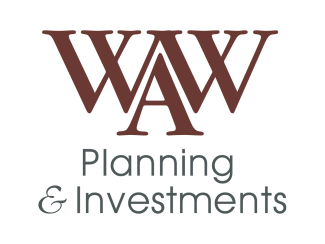Risky Business
Actor Tom Cruise has famously played a fighter pilot, a sports agent and a secret agent but his first starring role was as a budding entrepreneur in the 1983 film which supplies the title of today’s article. Based on a young man’s attempt to create a small business, the story chronicles his misadventures while his parents are out of town.
The movie was a popular and critical success with 96% positive reviews. However, seen in a different light, it also offers a catalogue of things that might go wrong in someone’s life, things that might have been best dealt with through appropriate risk management.
I reviewed the chapter titles from my Risk Management 501 textbook to make sure I didn’t miss any important topics for this article but realized that its focus is on insurance and I’d like to think a bit more broadly. Let’s begin with some lifestyle questions. Do you take care of yourself physically? Do you eat reasonably healthfully and get regular exercise? Do you smoke and/or drink to excess? These are critical questions when it comes to managing future health risks. While Americans are enjoying longer lifespans, the concept of enjoyment is likely to hinge on your physical health as you age. If you’ve taken care of yourself, you’ll probably have a wide range of activities in which you can participate. If not, the frustrations of a limited lifestyle may make life very unpleasant. Strenuous exercise is not required to maintain health. In fact, simply walking has been shown to provide significant benefits. Some years ago, my family physician remarked that about half of the patient issues he dealt with were optional. Through their various lifestyle choices, half of his patients were making themselves sicker. One of the truisms in the world of investing is that the best time to begin saving is 40 years ago and the second best time is today. I think it’s fair to say that the same is true of exercise. The mental and physical benefits will start to accrue almost immediately.
Are you a careful driver? Do you always wear your seatbelt and look both ways when pulling into an intersection? According to a recent article in the New York Times, 2016 was the second year in a row that auto death and injury rates have increased. Traffic fatalities are up 15% over the past two years through a combination of speeding, lack of seat belt use and lax enforcement of drunk driving laws. It’s tempting to blame distracted driving but never driving while drinking and always wearing your seatbelt are steps you can take to protect yourself regardless of what other drivers may or may not be doing. Of course, I know that you would never text and drive . . .
A less obvious risk management tool might be education. Presumably you’re currently employed but will that remain true long enough to ensure a comfortable retirement? The past generation’s social contract through which a high school graduate could be assured of lifetime employment is long past. Jobs are going overseas and, in the US, robots are building things instead of HS grads. Alternate forms of energy are making coal miners redundant all over the world. With all these changes already in process, what’s to be done? Especially as Baby Boomers hit retirement age, there are more openings than can be filled in what are known as middle skill jobs. While these almost always require some focused education, they rarely require a four year degree. That makes them a sensible alternative for those who are concerned about continuing in their present line of work.
For those in retirement already, there might be another reason that education could help manage risk. According to a recent article in the Harvard Business Review, lifelong learning is good for your health – among other things. Reading, even for a little while, can reduce your level of stress. There’s some evidence that the well-educated are generally healthier – perhaps due to having made better and more informed choices. And, according to Kiplinger.com, returning to education is not only fun but also good for your social life.
My wife and I have very good friends who plan their vacations so as not to miss continuing education classes available through something they called Ollie offered at the University of North Carolina in Asheville. I now understand how the quality of classes at that small campus could be so high. Theirs is part of a program of the Osher Lifelong Learning Institute. It’s one of several education and arts related initiatives of the Bernard Osher Foundation which has been striving to improve the quality of people’s lives since 1977. If you’re in or nearing retirement, you might want to see if one of the 119 participating schools is near you. If our friends are in any way typical, I’m pretty sure you’ll enjoy expanding on your current knowledge with OLLI.
Could you go further than taking classes? The Kiplinger article also profiled some people who have retired and returned to school as teachers. One was quoted saying that teaching retirees was more interesting than traditional students because they ask such challenging questions. In an example of the chef eating his own cooking, I am teaching three personal finance courses at the local Indiana University campus as I ease into my own retirement. Incidentally, teaching credentials are not required for adjunct faculty.
Since 1988, sports apparel giant Nike has been urging us to ‘just do it’. While their focus has been on enhancing athletic prowess, let me suggest that it can also be a useful risk management strategy. Many times over the years, I’ve been asked for shortcuts to spending less so as to be able to save more. I believe a better approach is to begin by saving more, then adjusting your budget to fit. How is this related to risk management? Well, for those who are convinced that they can’t live without hundreds of TV channels, barista prepared beverages or the very latest cell phone, saving more now provides a hedge against running out of money in old age. It’s your money, so you have to decide whether to spend it now or save some for later. Even if saving more now requires getting a second job, the time may come when health won’t permit even a first job and savings will have to fill the gaps. This thought is especially sobering considering today’s longer life expectancies.
Of course, the US government has provided safety net programs for decades. Social Security retirement benefits were enacted in 1935. Medicare and Medicaid came along later but none of these programs provide enough income to support a comfortable life. The only way to guarantee one is through saving more and investing it wisely.
Speaking of investing, when we hear that people want to avoid risk and invest in something safe, we try to ascertain just what safe means to them. If it means investing only in guaranteed strategies such as CDs and Treasury bonds, that safety is unlikely to provide a suitable retirement nest-egg. Could it be that investing in ‘riskier’ assets today could provide more safety in the future? That’s a question that you and your planner must answer together.
Classic risk management involves identifying risks, then deciding which of them to retain and which to share with others via appropriate insurance coverage. There’s almost always an option of how much coverage to purchase, ie, how much risk to lay off to the insurer vs how high the premium will be. These coverages generally fall into one of a few categories.
Life insurance is important to anyone who has dependents and/or debts. A family which experiences the untimely death of one of the wage-earners often finds itself in a difficult situation. Virtually all parents have hopes for their children and it’s unlikely that any will come to pass without a way to fund them. Adequate life insurance allows family plans to proceed, even in the absence of one of the adults. We simply insist that all client families which include children have appropriate life insurance coverage. As children age out into their own lives and/or debt obligations shrink over time, coverage may be able to be reduced too.
Homeowners (or renter’s) coverage is necessary to protect your dwelling and its contents. Since a home is most people’s largest asset, leaving it unprotected could lead to a situation from which there’d be no recovery. And, just as we sometimes find people over-insured as far as life coverage during their later years we sometimes find them under-insured as their collection of valuables rises. Depending on the location, flood insurance might be appropriate. This coverage is generally subsidized by the government but is systematically being adjusted to more market-like rates making what was once an easy decision somewhat more difficult.
The US is a country of drivers and that requires at least one of two different types of automobile coverage. Depending on the age and value of your vehicle, insuring it may or may not be appropriate but all drivers need coverage against damage to property or persons. We generally find the state minimums to be insufficient but almost all insurance companies allow you to purchase as much coverage as you want, so limits can be increased as family net worth increases.
Most of us visit a doctor from time-to-time, ideally at least once a year. The potential for huge expense when a medical emergency strikes makes some sort of health coverage important. Many of those who work full time can get coverage through their employer and, at least for now, the Affordable Care Act has made it available to all, although not necessarily cheaply. Medicare provides some protection to those age 65 or older but most people will benefit from supplemental coverage to protect against a financial disaster accompanying a health disaster.
It’s short-sighted to consider the topic of health insurance without mentioning long term care. As Americans continue to enjoy longer lives, insuring against some of the potential costs that may be associated with greater longevity becomes increasingly important.
While life and health insurance are well understood, not everyone thinks about disability coverage. According to the National Association of Insurance Commissioners’ website, approximately one-fourth of today’s twenty year olds will become disabled prior to retirement age, yet less than one-third of the (non-governmental) workforce has disability coverage. Like health insurance, disability insurance is easiest to obtain as part of a group, through an employer.
Finally, business owners and those in professional practice need coverage specific to their own situation. This probably includes general liability and personal injury policies and may also require a key person policy and/or errors and omissions coverage.
Every insurance policy is basically a contract with an insurance company which agrees to do certain things under certain circumstances in exchange for the premiums you pay. No policy should be entered into lightly and, again, your planner can probably help you understand important policy details and differences.
In closing, let me return to that textbook for a quote: Risk Management is the identification, assessment and prioritization of risk and the methods used to reduce and manage such risks. Not only is risk management an integral part of the planning process, I sometimes say it’s the foundation of all we do. Considering potential risks is something your planner can help you with but deciding how to respond to those risks is a decision you must make. And please remember that not making a decision is, in fact, making one by default.

